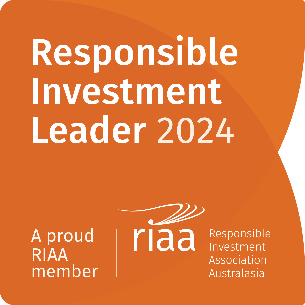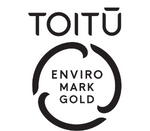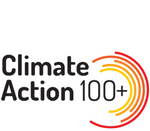M&A Mania

4th August 2021: This months commentary has been written by Devon's Portfolio Manager, Victoria Harris.
Last year, as the COVID crisis accelerated, many listed companies across the globe quickly pivoted into balance sheet preservation mode by tapping equity markets for capital. Nowhere was this more evident than in Australia and New Zealand. At one point in 2020, more capital had been raised in the Australian market, in a relative sense, than across global markets combined. According to Bloomberg (a global provider of financial news and information), the scale of capital raised as a proportion of index capitalisation for Australia, from March 2020 to July 2020, was 0.80% whilst in the US this number was at less than 0.2%.
At the time, this defensive shift was eminently sensible; the scale, duration and impact of the COVID-19 crisis were deeply uncertain, casting a dark cloud over the global corporate landscape. It was this scale of uncertainty which also proved to be the trigger for central bank and government action, setting the platform for one of the fastest and most dramatic economic recoveries ever seen.
Confidence plummeted across the globe as lockdowns were implemented and governments ordered residents to stay at home. In New Zealand, one of the main gauges of corporate health – the ANZ Business Survey – fell to -73, a number never seen before. The equivalent survey measuring corporate health in Australia – the NAB Survey – collapsed to -66. This marked an all-time low that was more than double that witnessed in the Global Financial Crisis.
Much like the GFC, the recovery from last year's confidence trough was short and sharp.
The benefit of rapid capital preservation by multiple companies, when combined with the tidal wave of monetary and fiscal support, led to substantial deleveraging . According to Bloomberg, net debt-to-EBITDA (a standard framework for considering the level of debt that a business has relative to its profitability) for the NZX50 Index and the ASX200 Index, excluding financials and property, is back to post-GFC lows. Not only has leverage fallen dramatically, but so too has the cost of debt.
In addition, confidence is being further bolstered in in corporate boardrooms by strong equity markets. Research shows there's a high degree of correlation between M&A activity and the direction of markets.
Surging confidence, lean balance sheets, the low cost of debt and the rebound in equity markets have led to a sharp pickup in M&A activity. Transaction levels, both in terms of value and volume, are up markedly, against last year and 2019. Interestingly the same can’t be said for the US where the volume and value of M&A activity is still below that seen in 2019.
For most companies across the ASX200 and NZX50, management teams find themselves well-funded, invigorated by the lift in confidence and looking to enact strategic plans that have been dormant for the past year, if not longer.
Also, it’s worth noting that it’s not just these corporates who are well positioned to engage in M&A. The emergence of superannuation funds as major players in takeover consortiums is further fuelling activity. Increased contributions by investors have led to super funds needing to identify investment opportunities. In recent months, the role of these super funds has been notable. For example, in the recent unsolicited takeover bid of Sydney Airport (SYD), a consortium made up of IFM, QSuper and Global Infrastructure Management, bid $8.25 per share for the company ( a 40% premium to its last close price). Spark Infrastructure (SKI) is another example of an infrastructure asset that caught the attention of pension funds, with Ontario Teachers out of Canada joining KKR to bid for the company. These types of assets are attractive as they provide long duration cash flows which are ideal for super funds with long-dated investment horizons.
Another recent example is oil producer Santos (STO) making a bid for Oil Search (OSH). It appears that the primary motivation for this deal is to enjoy the scale benefits that would be achieved through enhancing the Group’s market position. Despite having low debt, Santos’s bid was essentially a merger, whereby the proposal is 0.6275 Santos shares for every Oil Search share held (up from 0.589 original offer). The Oil Search Board of Directors has flagged that it intends on recommending the merger, essentially completing the deal.
It’s worth noting that not all M&A activity results in a successful outcome. Global private hospital operator Ramsay Healthcare (RHC) recently made a failed bid for a UK-based private hospital operator, Spire Healthcare Group (SPI). The acquisition failed as the target company’s largest shareholder (who owns approximately 10% of the shares) refused to accept Ramsay’s takeover offer of GBP2.50 per share. This bid was lifted from an initial offer of GBP2.40 per share. Australian conglomerate Seven Group (SVW) also made a failed bid for construction company, Boral (BLD). This offer was very opportunistic as it was done at a nil-premium to Boral’s last close share price.
The increased focus on Environmental, Social and Governance (ESG) considerations has also aided M&A activity. This was recently evident with the de-merger of the Endeavour Group by Woolworths (WOW). The Australasian supermarket chain divested its hotel, alcohol and gambling division to create better value for shareholders and to ensure that its remaining supermarket business is attractive to investors where ESG is a consideration. Before the de-merger, Woolworths was trading on a 26x forward price-to-earnings (PE) valuation whereas today it is trading on a more elevated multiple of 30x. This highlights that shareholders are willing to pay a higher price for a company with stronger ESG credentials.
In New Zealand, M&A activity levels have also been high. Earlier in the year, a consortium consisting of Australia’s Sovereign Wealth Fund, Mercury NZ and the Queensland Government bid for Tilt Renewables (TLT). The bid was at a 20% premium to last close price and at a premium valuation, indicating the attractiveness and demand for these types of renewable assets.
In many of the examples above, the offers for the target companies have come at a time when their share prices, and valuations, are still below their pre-COVID levels. This opportunistic interest allows the bidding company to get attractive assets at a discount but not all transactions have occurred in this way. There have been many companies which have notably benefitted from the COVID journey and these are also being targeted by potential acquirers. In the last few days, buy-now-pay-later (BNPL) company Afterpay was subject to a takeover bid. Despite trading on a very high valuation, US-listed payments company Square (SQ) made the approach at a 30% premium. Afterpay’s market-leading position in Australasia, superior technology and the fast-growing BNPL industry are likely reasons for Square’s interest.
Conventional wisdom suggests that it is far better to be a shareholder in the ‘hunted’ rather than the ‘hunter’. Indeed, most academic research concludes that the distribution of value creation is typically skewed to shareholders in the target company. As investors, elevated M&A activity levels indicate healthy public markets but they can also lead to 1) bidder companies biting off more than they can chew, leading to issues for shareholders down the track 2) a smaller pool of listed companies for investors especially if the IPO market isn’t as healthy and 3) it can lead to a post M&A lull causing share markets have lacklustre returns.
However, looking forward, having plenty of companies pregnant with cash and many superannuation funds allocating capital to public markets, the environment is ripe for the continuation of the current frenzy of M&A activity.





